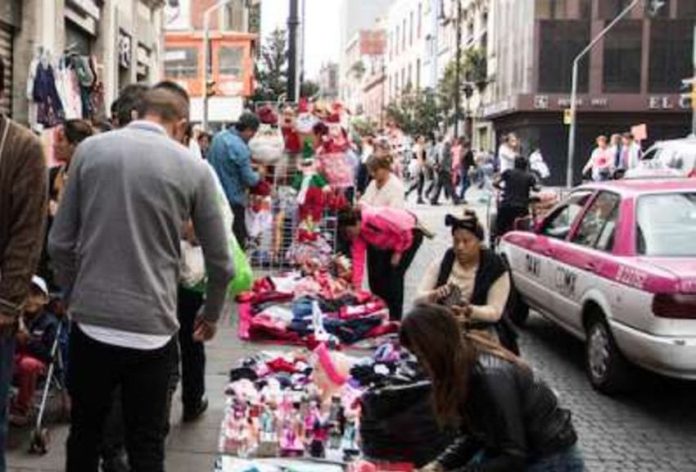Street vendors have invaded Mexico City’s emblematic central square despite assurances from the new city government that they wouldn’t be permitted to sell their wares there.
The sellers commonly known as ambulantes or toreros have also recently moved in on other parts of the capital’s historic center where they are ostensibly banned. Those locations include city hall, the crowded pedestrian street Madero and in front of the Palacio de Bellas Artes (Palace of Fine Arts).
According to Mayor Claudia Sheinbaum “the zócalo [the central square] is not open” for informal commerce but the newspaper Milenio reported today that vendors selling there have not been removed by authorities.
Arts, crafts, clothing, toys and food are among the products ambulantes sell either by setting up portable shops or by roaming from place to place.
Police in most cases do nothing to stop the practice unless they have been given specific orders to carry out an operation against it.
The owners and managers of brick-and-mortar establishments claim that the growing presence of the informal economy on the city’s downtown streets is having a negative impact on their businesses.
“It mainly affects us because the street vendors divert attention away from us . . . They’re very insistent with people and they don’t come in here anymore,” the manager of a men’s clothing store on Madero Street told Milenio.
A café employee on the same street said that on occasions when police have tried to crack down on the practice, fights have broken out.
“. . . For businesses that pay taxes, [the situation] is ugly. As far as I know they don’t have permission [to sell here] . . .” she said.
City resident Luz Muñoz said she hasn’t seen the capital’s downtown so crowded and chaotic for years and that the vendors are at least partially to blame.
“. . . You can’t walk because the streets are full, it feels more unsafe and [the street stalls] look bad, especially at Bellas Artes,” she said.
A street sweeper said that the amount of rubbish on the downtown streets has also increased significantly as a result of the high number of hawkers.
In 2007, the former Mexico City government, led at the time by current Foreign Affairs Secretary Marcelo Ebrard, cleared a large area of the downtown of street vendors and in the decade since only small numbers have moved back in.
But with a new mayor in office, the ambulantes have reappeared en masse. Some are demanding that they be given be permanent spaces in the street to set up shop and that the massive informal sector be legally recognized.
Diana Sánchez Barrios, president of an organization that represents informal economy workers, acknowledged that street vendors in the historic center shouldn’t be selling there but argued that they have no other choice.
“People have to go out to earn their bread. . .” she said.
Source: Milenio (sp)
